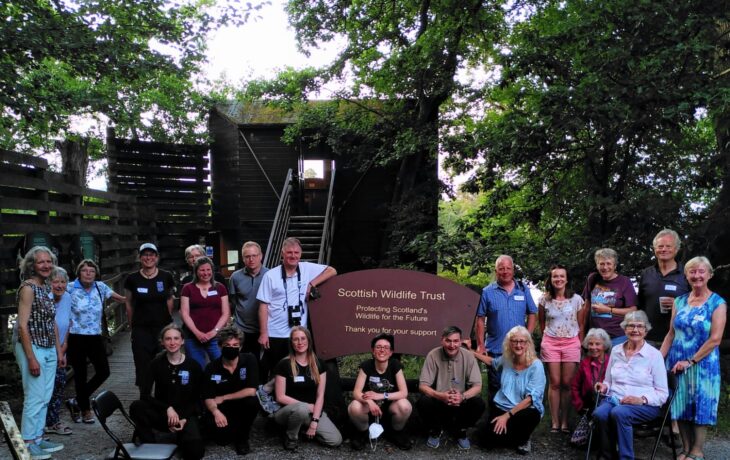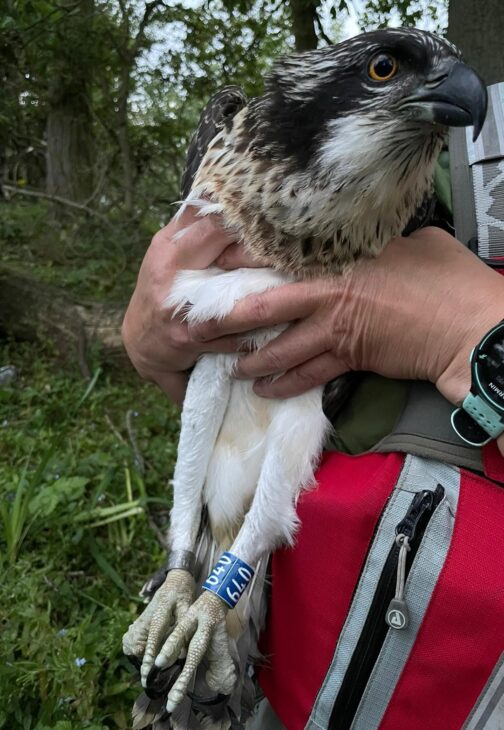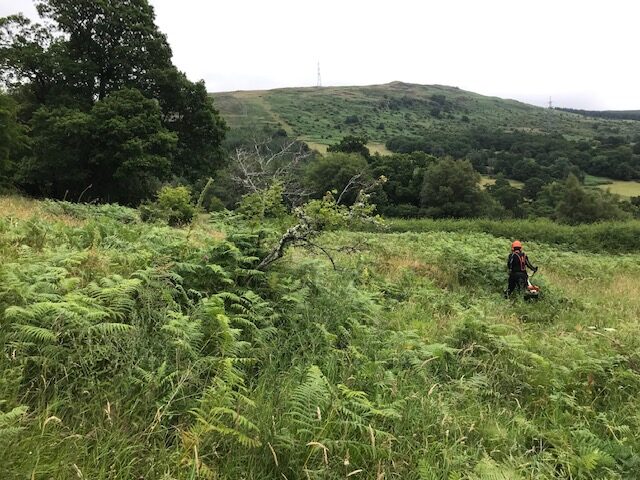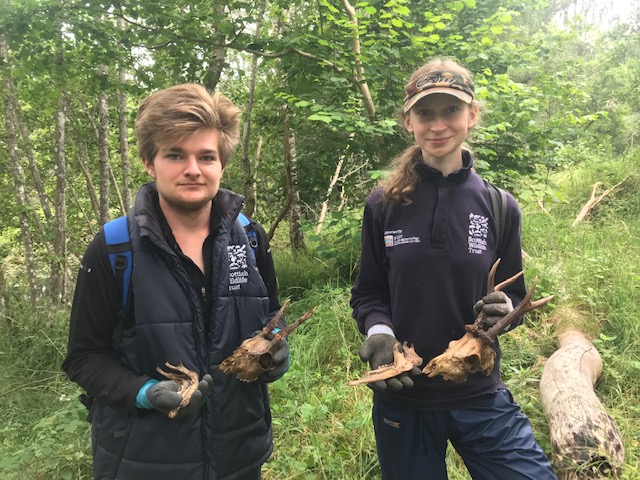Ranger round-up: Live and Let Fly
It’s been all go for the Assistant Rangers team at Loch of the Lowes. It’s hard to know where the blog should begin! As those of you who keep a keen eye on our webcam and blogs will surely know, our resident osprey chicks LP8 and LR0 have successfully fledged, which we thought called for a celebration.
A few weeks ago we held a ‘fledging party’ where our dedicated Osprey Watch team united for a night of facts, fun and reminiscing – not to mention some delicious baked treats, (which we assure you did not go to waste)!
Unfortunately, not everybody could attend on the night, but our heartfelt thanks go out to all of our amazing volunteers who generously gave up their time to ensure the family were protected from disturbance and any threats to the nest. Thanks to everyone’s time, care and commitment, two healthy young ospreys are now experiencing the world under their wing feathers and will hopefully be awing people for years to come.

Just how important nest monitoring can be was demonstrated to us just a couple of days later.
If the past few weeks here at Lowes have taught us anything, it is to always expect the unexpected. Just as we were heading out to tackle more balsam at the Tummel Shingle Islands reserve, Perthshire Ranger ‘Raz’ Rasmussen received some alarming news regarding the ospreys at the Scottish Wildlife Trust’s Balgavies Loch reserve, and our day was flipped on its head.
We were informed that the nest tree on the reserve had collapsed on the morning of Wednesday 20th July, taking the osprey family’s unfledged chick with it. Fortunately the youngster managed to reach the footpath unharmed, possibly by gliding or with some ungainly flapping, and was found by a couple of locals who got in touch with Warden Jim, who took swift action to move it to a secure location and kept it cool until further help arrived.
Later that evening, with skilled help from James Silvey and Robin Manson from the Tayside and Fife Raptor Study group, a plan of action was devised. James and Robin selected a suitable alternative site where a temporary makeshift nest could be erected and the chick could be placed.
The youngster appeared to be on the verge of fledging, but would have struggled to do so from the ground; the hope was that by giving it some height, the parents would see it and continue feeding it until the point that the chick felt ready to take its first (official) flight. And it worked!
We were informed the following day that the chick had successfully fledged, and that it was seen being fed by its parents on a nearby tree. The relief carried us through the busy week that followed. We all love a good success story!

For more information on what happened at Balgavies and why the Scottish Wildlife Trust got involved, you can read the feature blog here
After that very late and eventful night, the idea of rising early for a busy day beating back bracken was admittedly not an enjoyable one, but we were glad we did. This was to be our partnership day with Garth Wood and the Heart of Scotland Forest Partnership on an area of land bordering the Trust’s Keltneyburn reserve.
Garth Wood is owned and managed by Emma and her partner Hennig, who have made it their quest to rejuvenate the barren area that was previously coniferous plantation with the vision of returning it to a self-sustaining state rich in wildlife and biodiversity. Unfortunately, a familiar foe stood in their way–that dastardly bracken!
Although bracken is a native plant in Britain, it can run amok across fields where there are no mature trees to outcompete it for light. As bracken grows tall and dense, it will crowd out any tree saplings trying to take root, which prevents trees from growing and restoring the balance. However, by now we were battle-hardened bracken-bashers! With grass hooks in hand, backed by volunteers and revived by Hennig’s delicious cakes (we could make a blog based on baked goods alone!), we blitzed that bracken and returned to Lowes victorious… if also nursing a few nettle wounds.

Meanwhile, our battle through the balsam-infested backwaters of the Tummel Shingle Islands reserve has finally been concluded. The invasive pink flowered plants are no more, allowing us to focus on the other things around us on our travels around Perthshire.
We have been tantalised by animal trails, intrigued by stinky scats, and journeyed down some badger highways to uncover treasure in the form of tiny badger footprints around a series of active setts.
We also discovered the remains of roe deer, which were fascinating as much as they were morbid. It was interesting to compare the teeth of the two individuals, for one was clearly an adult by its size and worn teeth, whereas the other was certainly a juvenile, it’s teeth still sharp and growing.
What’s a day out without having a good poke around at poo and dead things, we ask? Not a very exciting one!

There is much still to do and so much to learn, but you can follow our antics via our regular blogs. Who knows what the next few week will bring?
Help protect Scotland’s wildlife
Our work to save Scotland’s wildlife is made possible thanks to the generosity of our members and supporters.
Join today from just £3 a month to help protect the species you love.
Preface
It’s been all go for the Assistant Rangers team at Loch of the Lowes. It’s hard to know where the blog should begin! As those of you who keep a …
